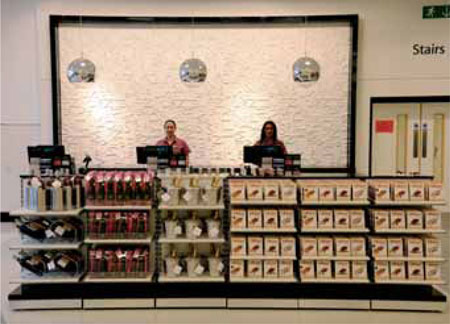Point of purchase and add-on sales

Placed adjacent to the cash registers where customers wait to pay, candy and small pick-up items are positioned to easily tempt them.
Many retailers maximize their sales potential by using point of purchase and add-on sales. Both are aimed at customers who have already purchased and are now being encouraged to buy other items.
Point of purchase
Anyone paying for a magazine in a convenience store or for fuel at a gas station would have been targeted—on most occasions unwittingly—by point-of-purchase merchandise. The fixture that holds low-price items such as chewing gum, batteries, and air fresheners are all point-of-purchase fixtures, usually supplied by the vendor. The power of point of purchase should not be underestimated; this is the last chance the retailer has of taking money from the customer. Volume sales at low prices can be instrumental in elevating the store’s sales turnover.
Destination stores such as supermarkets will usually use point-of-purchase fixtures supplied by brands that are designed to carry only their products, such as chewing gum. The brands are often familiar to the customer and are a useful commodity. Point-of-purchase offers in department stores may not be as obvious. There the most common point-of-purchase item might be a gift voucher or economical collection of merchandise. For a major retailer, the most profitable point-of-purchase item would be for a customer to sign up for a store account card at the cash desk.
Add-on sales
An add-on sale differs from a point-of-purchase offer because it is generally driven by the sales staff. Retailers will often encourage their staff to try and persuade the customer to buy extra products that complement their main purchase, i.e. shoe polish or protectors for footwear sales, batteries with electrical sales, and additional flattering cosmetics in the beauty department. Not every customer is comfortable with this hard-sell technique, and it is sometimes wise to incorporate both add-on and point of purchase to gain the maximum transactions. Positioning add-on sales close to the main product categories allows customers to easily discover them by themselves.

Potato chips, cookies, and healthy snacks are deliberately placed near the cash register to tempt customers to pick up additional items. Many cash desks will have shelves specifically designed to sit at the front.
